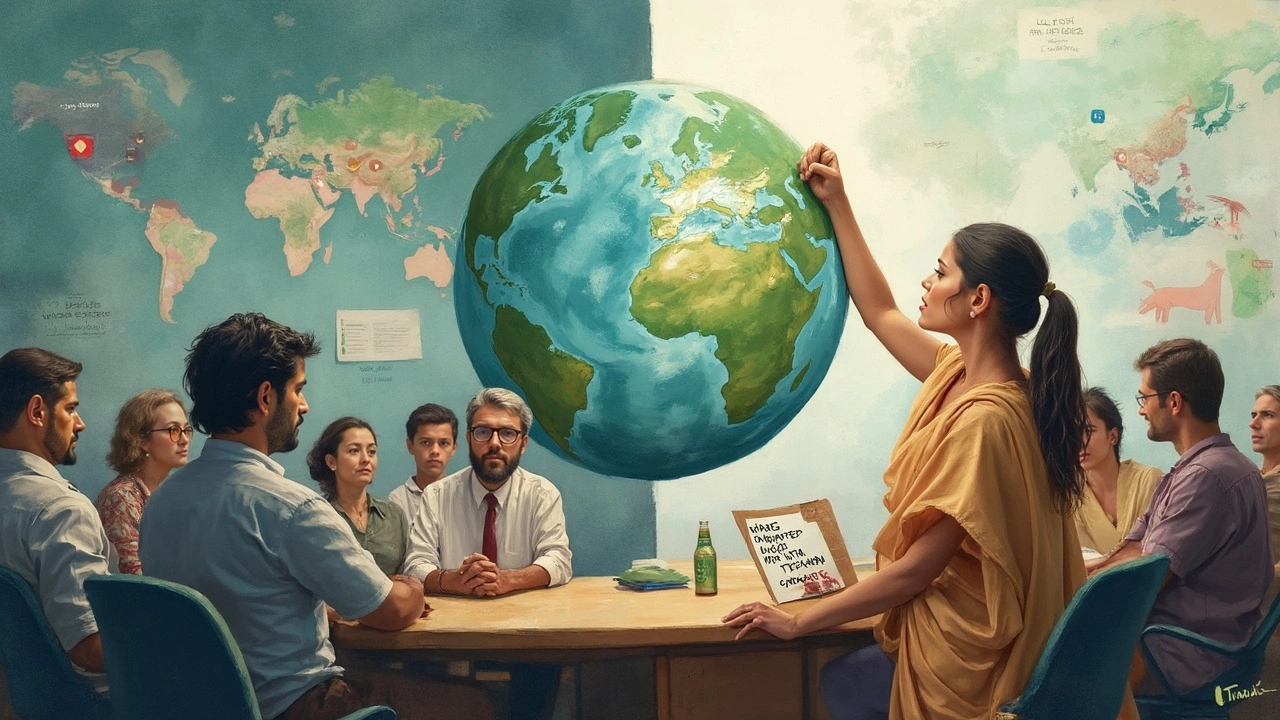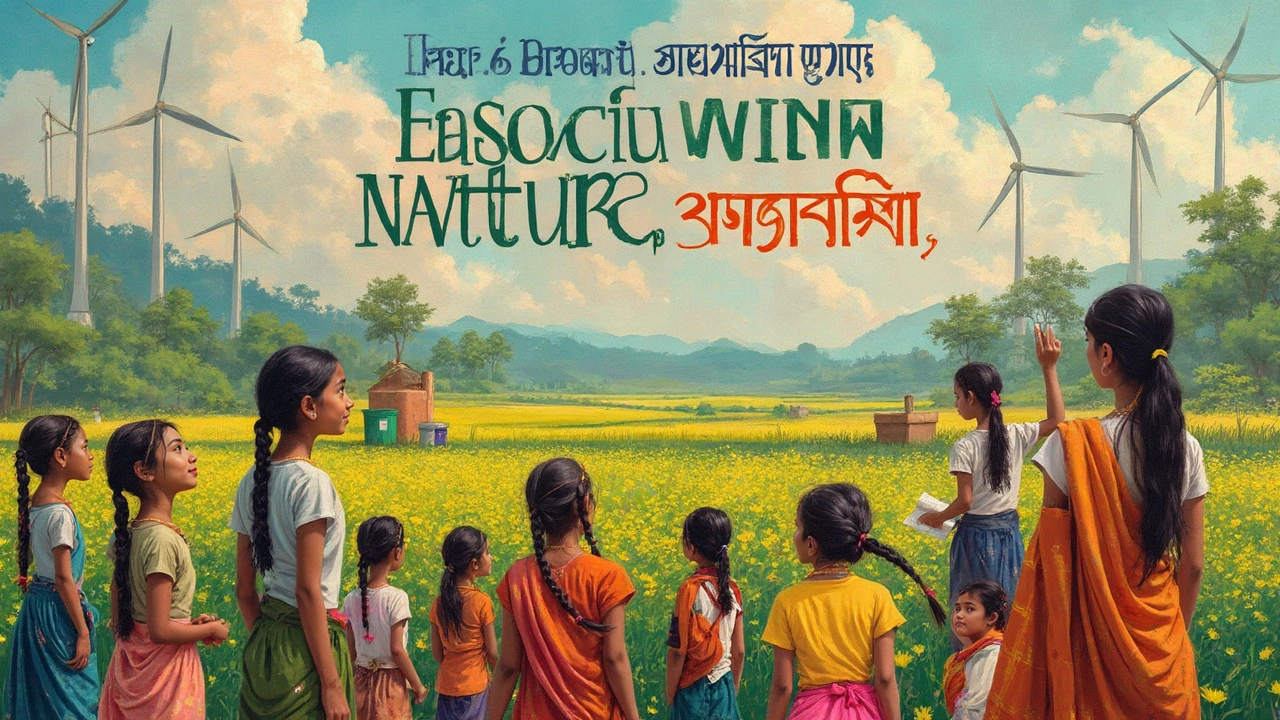Ever wondered who’s actually fighting for cleaner air and water in the US, besides the folks you see in documentaries? You might recognize the Sierra Club or Greenpeace from their iconic rallies, but there’s a whole mix of groups out there—each with their own style and mission. Many aren’t flashy, but quietly help protect the places we love, from national parks to city playgrounds.
Some focus on changing laws. Others plant trees, rescue animals, or teach kids how to recycle (my daughter Larissa once made me label every single bin at home). No two groups are the same. And let’s be real—some have budgets that rival a small town, while others rely on potlucks and homemade flyers. Knowing who does what can help you make solid choices if you want to donate, volunteer, or just stay informed.
- Big Names Leading the Charge
- Local Heroes: Impact in Your Backyard
- Youth and Grassroots Movements
- Unusual and Niche Groups
- How to Get Involved (Without Burning Out)
Big Names Leading the Charge
If you’ve ever looked up environmental groups in the US, the same few giants always show up first—and for good reason. These organizations handle everything from lobbying in D.C. to digging in the dirt, and their track records are packed with wins (and their fair share of losses).
The Sierra Club is one of the oldest and loudest voices for the environment. Founded back in 1892, they now have millions of members. They helped get more than 400 coal-fired power plants retired, which is a pretty wild stat. They’re all about making sure public lands really stay public, not handed over to oil or mining companies.
Then there’s The Nature Conservancy (TNC), which has a different vibe. Picture maps and land deals. TNC has protected over 125 million acres of land globally, including huge swaths in the US. Their secret sauce is working directly with landowners and big companies to save more spaces without the drama of protests or lawsuits every week.
Greenpeace takes another approach—they go for attention. Famous for bold stunts and viral videos, they push for changes in things like plastic pollution and ocean protection. If you’ve ever seen footage of activists hanging from oil rigs or blocking whaling ships, that’s probably Greenpeace in action. They might not have the same membership size as the Sierra Club, but their media reach is massive.
Here’s a quick look at just how powerful these organizations are—not just in people power, but in real-world results:
| Organization | Founded | Members | Notable Win |
|---|---|---|---|
| Sierra Club | 1892 | 3.8 million | Retirement of 400+ coal plants |
| The Nature Conservancy | 1951 | One million+ | 125 million acres protected |
| Greenpeace USA | 1971 | ~250,000 | Major plastic bans and ocean campaigns |
One thing to remember: these groups aren’t always on the same page. Sometimes they even argue about how to make change happen. But together, they shape most of the big victories you see in the news. If you ever want to dip your toe into climate activism—or just find out what’s happening in your state—it’s smart to follow one (or all) of these heavy-hitters.
Local Heroes: Impact in Your Backyard
It’s easy to think the big environmental groups grab all the wins but, honestly, so much real change starts on your own block. All across the US, there are groups run by neighbors, teachers, and even high schoolers who see a need and just get to work. They tackle things major organizations barely notice, like local river cleanups, tree-planting days, or fighting that weird chemical smell coming from a small factory down the road.
One standout example is the Los Angeles-based organization Heal the Bay. Back in 1985, a handful of folks banded together to stop raw sewage from pouring into Santa Monica Bay. Today, they’ve grown into a powerhouse running beach cleanups, educational programs, and real-time water quality reports for over 450 locations a year. If you swim in Southern California, there’s a good chance you’ve checked their beach grades before dipping your toes.
In the Midwest, you’ll find the Alliance for the Great Lakes. They’re on a mission to stop plastic pollution and invasive species from destroying the lakes so many of us fish, boat, and swim in all summer. Every year, thousands of volunteers hit the shorelines to haul out trash—last year alone, they removed more than 35,000 pounds of litter in the region.
Don’t overlook the groups working in smaller towns and cities, either. Take the Chesapeake Bay Foundation: they combine legal pressure with local oyster-planting projects, helping clean up the bay one shell at a time. And in Portland, Friends of Trees has planted over 900,000 trees and shrubs across neighborhoods, making shade for playgrounds and cleaner air for everyone.
Check out these quick stats on local impact:
| Organization | Founded | Main Focus | Annual Impact |
|---|---|---|---|
| Heal the Bay | 1985 | Beach/beach water quality | Over 60,000 lbs trash collected |
| Alliance for the Great Lakes | 1970 | Great Lakes protection | 35,000 lbs trash removed |
| Chesapeake Bay Foundation | 1967 | Bay/oyster restoration | 50 million oysters planted in 2024 |
| Friends of Trees | 1989 | Urban tree canopy | 40,000+ trees each year |
Want to pitch in? Most local groups make it super easy: just sign up online, show up for a weekend cleanup, or help run social media if you’re techy. Besides, your kids can jump in too—mine love getting muddy and feeling like superheroes for the day. You don’t need to join every event; even one afternoon a year helps keep your community greener and cleaner.

Youth and Grassroots Movements
Young people in the US aren’t just talking about the environment—they’re organizing, marching, and actually shaping the conversation. You’ve probably seen Fridays For Future walkouts, inspired by Greta Thunberg but supercharged by American teens. In 2019, over 4 million students worldwide—including hundreds of thousands across the US—joined climate strikes. My son Tamar says his school’s Earth Club grew three times bigger after their first protest, which goes to show how fast these things snowball.
Groups like the Sunrise Movement are making headlines. Sunrise started in 2017 and quickly pushed climate policy to the top of the national agenda, especially with the Green New Deal talk. Their approach is all about showing up in big numbers and telling bold stories—remember when they filled Nancy Pelosi’s office in 2018? That moment got covered everywhere and showed just how much pressure young activists can bring.
But it’s not just high schoolers. College orgs like the Student Environmental Action Coalition (SEAC) and campus divestment campaigns target how universities spend their money—Stanford, Harvard, and the University of California have all faced student pressure to ditch fossil fuel investments. Some already have.
Grassroots groups go hyper-local. There’s UPROSE in Brooklyn, run mostly by young Latino and Black activists fighting for clean air right in their community. Or the Indigenous Environmental Network, supporting Native youth who defend water and land from pipelines and pollution. These aren’t big-budget operations, but their on-the-ground wins really stack up.
- Fridays For Future: Youth climate strikes in almost every major US city.
- Sunrise Movement: Chapters in all 50 states; helped shape Biden’s climate plan.
- UPROSE: Won funding for climate adaptation in NYC’s Sunset Park neighborhood.
- Indigenous Environmental Network: Active in the Dakota Access Pipeline protests.
Here’s something wild: according to a 2024 Gallup poll, 71% of Americans age 18-29 say they worry “a great deal” about climate change—way more than any other age group. It’s not an older-people game anymore.
| Group | Founded | Main Focus |
|---|---|---|
| Sunrise Movement | 2017 | Youth-led climate activism |
| Fridays For Future USA | 2018 (US) | Climate strike walkouts |
| UPROSE | 1966 | Environmental justice (Brooklyn, NY) |
| Indigenous Environmental Network | 1990 | Native American environmental rights |
Bottom line: if you care about change, you don’t have to wait for Congress. Most environmental groups in the youth and grassroots scene offer quick options to join, donate, or just show up for a meeting. And a lot of their work starts with people your age—or even younger—spotting problems and doing something about them, no fancy degree needed.
Unusual and Niche Groups
Not all environmental groups come with big banners or national TV spots. Some focus on one quirky thing and get results nobody else can. Ever heard of the Surfrider Foundation? Started by surfers in Malibu who were fed up with beach pollution, they're now all over the US protecting coastlines and water quality. They run smart campaigns, like convincing cities to ban foam food containers that end up in the ocean. Only 10% of Surfrider’s local leaders work as full-time staff—the rest are volunteers. That’s a lot of passion.
Another cool one is Bat Conservation International. These folks don’t just save bats for fun—bats are major pest controllers for farmers and keep bugs in check naturally. In Texas, they helped protect Bracken Cave, home to over 15 million bats (the largest bat colony on earth!). Thanks to them, farmers avoid pesticides and save millions with just bats on their side.
For people who love the outdoors but want to see more people who look like them outside, there’s Outdoor Afro. They connect Black communities with nature for hikes, camping, and building new leaders. In 2023, they organized over 1,200 group outdoor events across the country.
If zero-waste living is your jam, check out the Plastic Pollution Coalition. They work with schools, local governments, and musicians to spread a simple message—refuse single-use plastic wherever you can. Their “plastic-free campus” program hit nearly 500 schools last year.
| Group Name | Focus Area | Notable Impact |
|---|---|---|
| Surfrider Foundation | Coastal protection, clean water | Helped pass over 800 laws/policies for coastal health |
| Bat Conservation International | Bat habitat and biodiversity | Protected Bracken Cave's 15 million bats |
| Outdoor Afro | Nature equity, outdoor access | Hosted 1,200+ group events in 2023 |
| Plastic Pollution Coalition | Single-use plastic reduction | Launched plastic-free programs at 500 schools |
These unusual groups show that you don’t have to join a crowd to make a difference. If there’s a thing you care about, there’s probably someone out there tackling it—often with creative ideas that actually work.

How to Get Involved (Without Burning Out)
Jumping into the world of environmental groups can be inspiring but also kind of overwhelming. It's easy to feel like your small actions don’t matter—or to end up so busy you forget to breathe (been there, done that when I tried juggling PTA bake sales and river cleanups). The trick is to pick activities that fit your schedule and your style, so helping the planet doesn't become another source of stress.
- Start Small: Seriously, even one afternoon a month in a local park cleanup works. Most groups have flexible volunteer spots for beginners—no experience needed.
- Pick What Excites You: Love birds? Try Audubon's bird counts. Into politics? Volunteer with the League of Conservation Voters. Don’t force yourself to canvas if you’d rather dig in the dirt.
- Mix Online & Offline: Groups like Earthjustice let you sign petitions or email lawmakers straight from your phone, while others like The Nature Conservancy offer field trips and tree plantings.
- Set Clear Boundaries: If you can only give an hour a week, say so. Good groups will respect that. Burnout is real—over half of young climate activists in the US say they sometimes feel too emotionally drained to keep up, according to a 2023 Pew Research Center survey.
- Make It Social: Bring a friend or your kids. My son Tamar once roped his whole soccer team into a beach cleanup. It was chaotic but way more fun.
Donating is another way to pitch in. Most legit groups welcome contributions of any size. To check if a group really puts your cash to work, sites like Charity Navigator or Guidestar rate transparency and impact. If money’s tight, share their social posts or attend free trainings.
| Activity | Time Commitment (per month) | Examples |
|---|---|---|
| Online Petition Signing | 15-30 min | Earthjustice, NRDC |
| Park/Beach Cleanup | 2-4 hours | Sierra Club, Surfrider |
| Advocacy/Letter Writing | 1-2 hours | League of Conservation Voters |
| Event Volunteering | 3-6 hours | The Nature Conservancy |
| Ongoing Local Group | Varies—2 to 10 hours | Community Gardening Club |
Whatever way you join in, remember the cause isn’t just about saving forests or wildlife—it’s about protecting the places your family actually lives. So, go at your own pace, say yes to help when you need it, and remember you don’t have to do it all to make a real difference.
